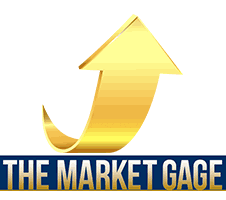
Stocks plunge after China retaliates on tariffs. Beijing says that it will set new tariffs of between 5% and 25% on $60 billion of U.S. imports.
The move will hit around 5,000 products. The tariffs are due to kick in on or about June 1st. With the Dow Industrial average down this morning over 400 points, the price of Gold has been on the rise.
It’s only a matter of time as equity’s continue to decline that investors will be heading for safe haven products like Gold.
Palladium
If you have been following the Palladium market for the last two years or so, you would have noticed that the price has doubled since August 2018.
This move has been caused by a short supply of spot physical Palladium needed for industrial production. This market action has attracted Commodity Hedge Funds as well as new investors into the fold.
So, why did the Palladium price increase?
Palladium’s largest single use is in automotive catalytic converters. More and more regulations are being imposed to reduce the emission of gases from automobiles as more of them are put on the road. This increases the demand from auto manufacturers.
The demand for Palladium especially in the automotive industry kept increasing to the point that the market began experiencing supply deficits.
Depending on who you talk to, the short supply this year is estimated anywhere between 500,000 to 1 million ounces, and is expected to be in a continued short fall at least for next few years.
Palladium Price Backwardation
If you have been reading the “Market Gage” you’ve see us use the term “backwardation” in describing the spot price in short supply.
That means that the supply deficit is so strong that it has caused the
spot price of Palladium to be higher than the near term most active
Futures contract. Lease rates for near-term have also risen above the longer-term contracts. In commodities contracts, this is known as backwardation. When a commodity reaches backwardation, it means that buyers are willing to pay more for metal now than they will in the future.
If you have viewed the EFP, that’s the figure that truly reflects how
expensive it has become to obtain the spot physical metal. At one point some dealers were quoting the spot market price to be $70 dollars an ounce over the most active current futures contract.
So, what does the future hold? I expect the current price range of Palladium to hold for some time. Even with the recent slowdown in the automotive market, the prices of Palladium should remain stable. And if the demand increases, tightening could cause the price to continue climbing. I don’t expect the deficit in supply to be reversed any time soon.
China’s demand for autos has slowed down, but with China’s emission standards continuing to become more restrictive in the years to come, one could expect the need for Palladium to increase not decline.
Investors and traders alike must realize that in a market this small, compared to other metals, it will not take much for a significant decline
in price if a substantial amount of Palladium finds its way into the Zurich
vaults. So, keeping an eye on the activity in EFP is highly recommended.
Have a wonderful Monday.
Disclaimer: This editorial has been prepared by Walter Pehowich of Dillon Gage Metals for information and thought-provoking purposes only and does not purport to predict or forecast actual results. This editorial opinion is not to be construed as investment advice or as a recommendation regarding any particular security, commodity or course of action. Opinions expressed herein cannot be attributable to Dillon Gage. Reasonable people may disagree about the events discussed or opinions expressed herein. In the event any of the assumptions used herein do not come to fruition, results are likely to vary substantially. It is not a solicitation or advice to make any exchange in commodities, securities or other financial instruments. No part of this editorial may be reproduced in any manner, in whole or in part, without the prior written permission of Dillon Gage Metals. Dillon Gage Metals shall not have any liability for any damages of any kind whatsoever relating to this editorial. You should consult your advisers with respect to these areas. By posting this editorial, you acknowledge, understand and accept this disclaimer.
